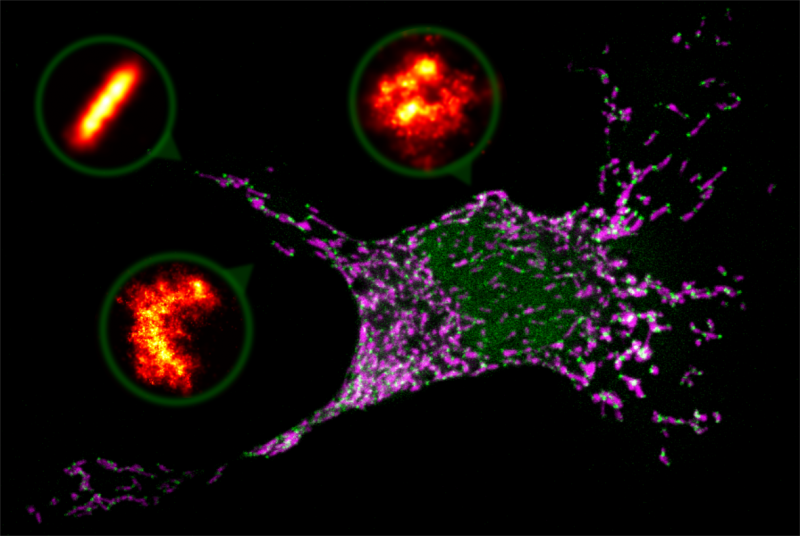Ring- and arc-shaped pores drive stressed cells to a programmed death

Damaged cells can commit suicide by a process of apoptosis, or programmed cell death. If this mechanism fails to work properly, the cell can become cancerous. Tübingen researchers in a team headed by professor Ana García-Sáez of the Interfaculty Institute of Biochemistry are helping to explain important steps in the process of apoptosis. They know from previous studies that apoptosis begins with the activation of what are known as Bax proteins. If a cell is under stress, Bax proteins deposit on the surface of mitochondria in symmetrical pairs. The researchers then observed that the otherwise impermeable shell of the mitochondria becomes permeable – letting through cytochrome c. Once that happens, the process of cellular death cannot be reversed. But what happened in between was a mystery which for a long time puzzled apoptosis researchers. Now Ana García-Sáez and her team have been able to use a supermicroscope to watch how Bax proteins form pores in the mitochondrial shell, making it permeable.
Their study is published in the EMBO Journal.
In healthy cells Bax is present as a soluble, single protein, which moves back and forth between the cytoplasm and the surface of mitochondria. When stress signals set in, Bax proteins accumulate on mitochondria. Scientists had suspected that Bax pairs linked up to form pores, opening the outer shell of the mitochondria for certain substances. But until now, they had not been able to observe if Bax structures could form these pores on the mitochondria. For this reason, the doubt had been cast on the theory.
In collaboration with Jonas Ries at EMBL, Ana García-Sáez and her team used a super-resolution microscope that is able to make out individual molecules. This gave them images showing how Bax proteins gathered on mitochondria of cells under stress in cell-death mode. The Bax structures they found were of differing shapes and sizes, but could not have been created by chance. They were in the shape of closed rings, incomplete rings, arcs like a sickle moon, and in lines. The formation of these structures of Bax correlated with the mitochondrial shell becoming permeable. This confirms the researchers' hypothesis - thereby filling a crucial gap in our knowledge of the processes involved in apoptosis.
More information: Raquel Salvador-Gallego, Markus Mund, Katia Cosentino, Jale Schneider, Joseph Unsay, Ulrich Schraermeyer, Johann Engelhardt, Jonas Ries and Ana J García-Sáez: Bax assembly into rings and arcs in apoptotic mitochondria is linked to membrane pores. The EMBO Journal, DOI: 10.15252/embj.2015933841
Journal information: EMBO Journal
Provided by Universitaet Tübingen


















